
Rights Reserved - Free Access.
This digital object is protected by copyright and/or related rights. This digital object is accessible without charge, but its use is subject to written permission.
Unless expressly stated otherwise in the licensing conditions, you are free to make any of the acts permitted by your national copyright and related rights act, including browsing, printing and making a copy for your own personal purposes.
All other acts of reproduction and communication to the public are subject to the licensing conditions attached to the digital object.
ARMY BOOTS OF THE WORLD. REVIEWS
Important notice: we do not sell any boots! The prices are given for information purposes only!
Denmark ![]()
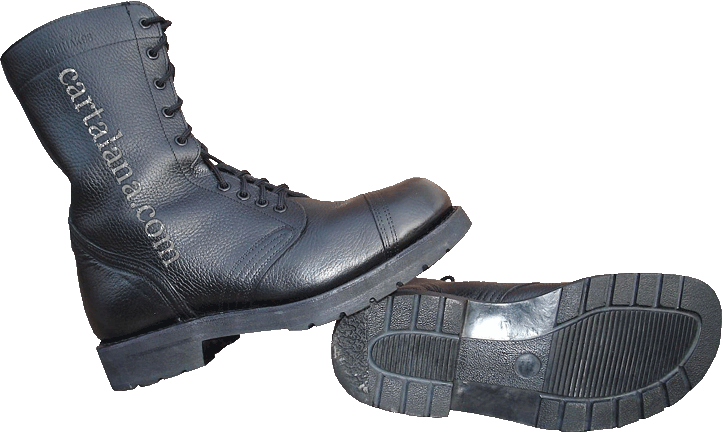
High-laced army boots model M/58 were introduced in the Armed Forces of Denmark after the year 1958. In the previous years the Danish soldiers used to wear low "ankle" boots with canvas gaiters with the British-type uniform, mainly because the post-war Danish army was supplied with the uniforms from the British Army warehouses. Further on the own-made Danish uniform was similar to the British one by the cut and general appearance.
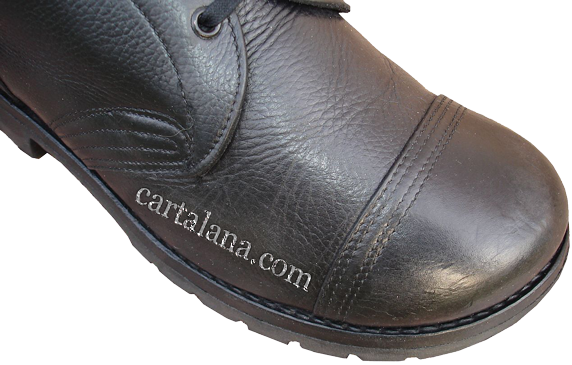
Military boots of the model M/58 were created mainly to the pattern of American army boots of the 1950s, and proved so successful that with minor modifications they were used almost until the beginning of the 21st century.
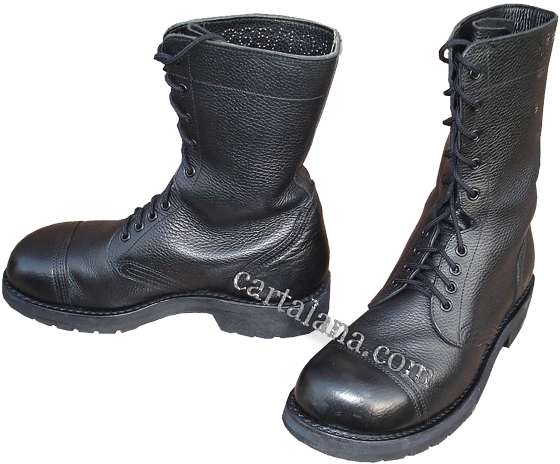
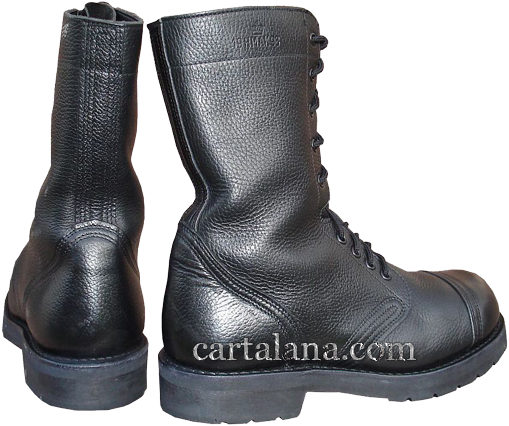
These boots can be characterized by simple design and reliability, high maintainability and flexibility, quality and durability. The toe and the counter are reinforced with additional layers of the leather, the top is made of thick but flexible "grainy" cowhide leather with hydrophobic impregnation. The soles are glued and stitched to the boot's top.
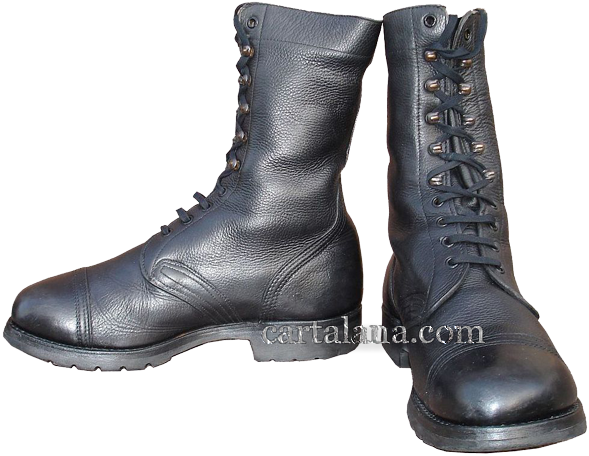
The real Danish military boots are obligatory marked with the Danish royal crown above the abbreviation "HMAK" ("Hærens MAteriel Kommando", i.e. "Material supply office" of the armed forces of Denmark). To the left and to the right of the "HMAK" abbreviations the first two and the last two digits of these boots production year are indicated. For example, "19HMAK98" means that this pair of boots were manufactured in the year 1998.
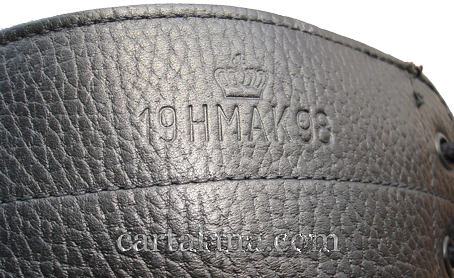
This marking is indicated outside upper parts of the boot's top.
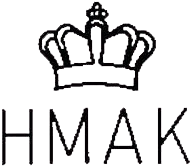
"HMAK" is one of the oldest institutions in Denmark, its predecessor was established back in 1596 in order to optimize the accounting and control of the Danish army material support by the King, and the name "HMAK" was in use since November 1, 1968. This organization was involving more than 1,100 military and civilian personnel in the second half of the 20th century, being responsible for all the matters related to the production, supply and delivery in the armed forces. "HMAK" was ensuring quality control over all the aspects of military supply, starting from the soldier's diet and ending with large military equipment, uniforms and footwear.
On January 1, 2007 "HMAK" was transformed and enlarged, having incorporated the Material supply offices of the Danish Air Force and the Navy. Nowadays this institution is called FMT ("Forsvarets Materiel Tjeneste" - i.e. "Material supply Command of the Ministry of Defence of Denmark) and subordinates directly to the Danish Minister of Defence.
These boots feature no lining inside, but the inner upper part of the boot's top has an extra band is leather, which also bears the identification marking: the early boots were marked with single digits, while the size was indicated by the code of one or more holes.
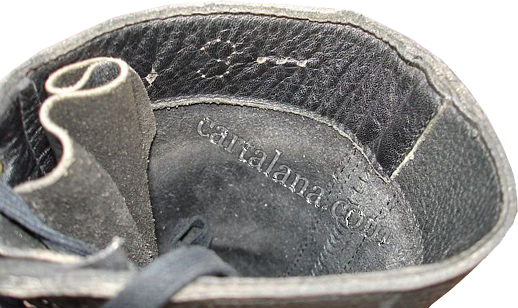
Since the 1980s, the three-digit size number was indicated along with the width of the boots, these indications use to be separated by slash.
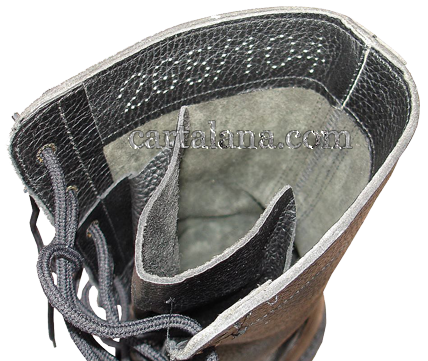
If the Danish military boots had been written off an army warehouse and put on sale in the civilian market, this can be easily distinguished by "demilitarization" perforation (two longitudinal cuts) on the inner sides of the boot's top.

The Danish Ministry of Defence is sufficiently loyal to the future owners of Danish army boots, having not spoiling the boots too much, as opposed to, for example, their Austrian colleagues. The Austrian Bundesheer adheres to the procedure of cutting large (up to 1.5 cm in diameter!) circular holes in the tongues of each pair of "demilitarized" Austrian army boots. The Canadian Ministry of Defence, for example, uses to cut the upper sides of the "demilitarized" boot's tongues with scissors.
In winter time the Danish army boots are insulated with additional insoles and wool socks are to be used. Of course, one should choose the boots one or two sizes larger than the boots worn during the warm season. Usually the Danish boots are wide enough by size (they mostly have wide width).
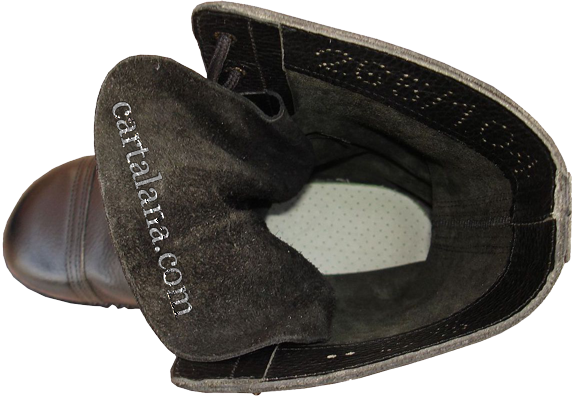
The boot's tongues are not round-shaped on top, but almost square-shaped. The boot's flap is almost closed and stitched to the level of eight's pair of eyelets, counting from the down. The tongue is one-layered, and no additional padding inside the boots or tongues is provided.

The Danish boots lacing system eventually modified in the direction of further simplification: at first they used the system " four pairs of simple round eyelets on the lower part of lacing, then five pairs of bronze hooks for lacing above, and an additional pair of round eyelets on the top (this peculiarity is typical for most Danish army footwear).
Further on the hooks were replaced by simple round-shaped eyelets.
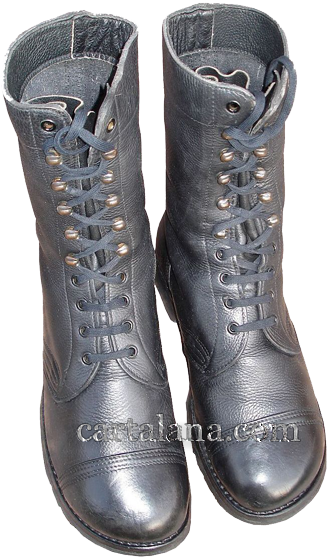
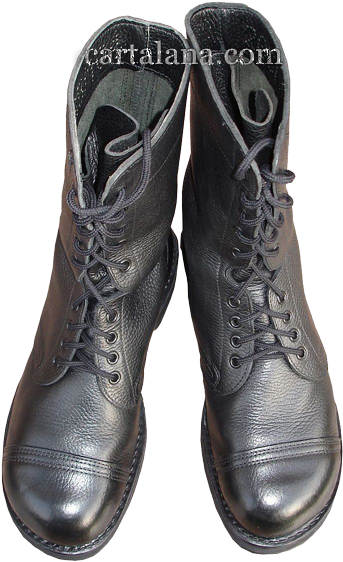
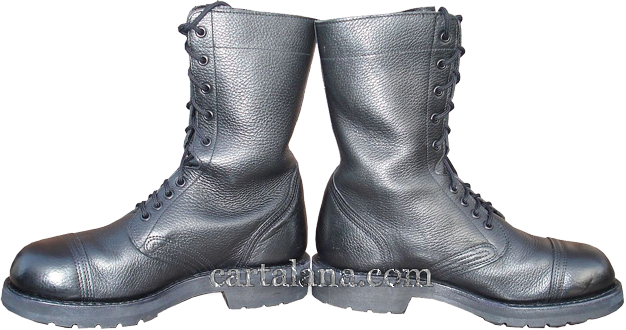
The soles are made of hard water-resistant vulcanized rubber. The tread pattern of the sole is of Danish design, with fine grooving, which does not clog small stones and mud, and thus they are not too slippery on ice.
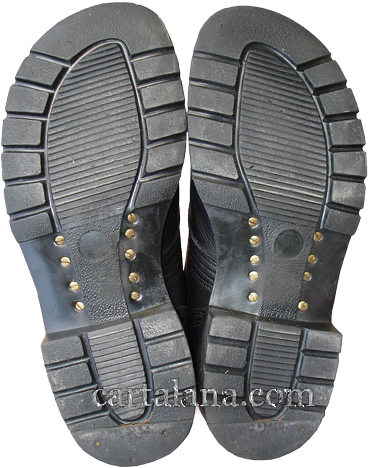
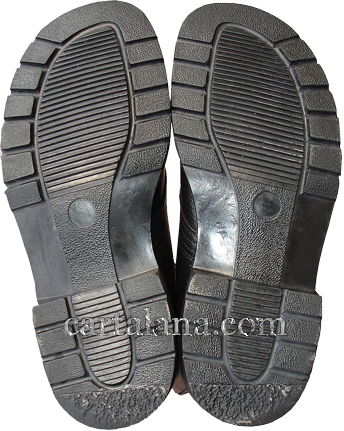
In early models of Danish military boots the soles used to be reinforced by additional fixtures: brass screws in the middle of the foot, and sometimes on the toes and heels. Later the sole used to be fastened with simply glueing.
Since in 1996 the contract manufacturer of Danish Army boots for hot and dry climate is "LeBOCK ApS" company ("Lebock, Ltd."), founded by Ole Bock in Faaborg (Faaborg), where the company's headquarters is situated today.
The Danish "desert" boots, produced by this company are made of suede or smooth leather and breathable "Cordura" nylon fabric. These boots are available in two basic colours:
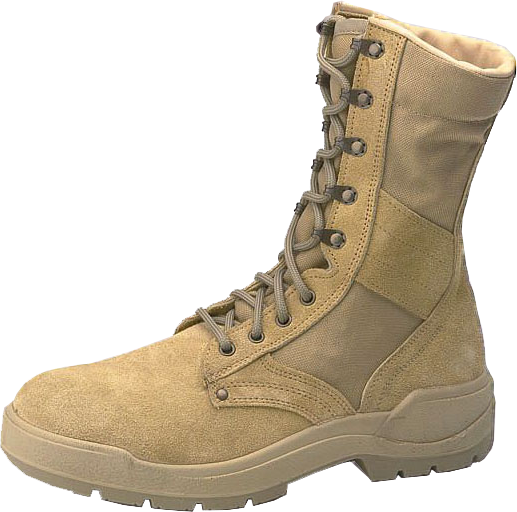
beige ("LeBOCK DesertZone støvle") and
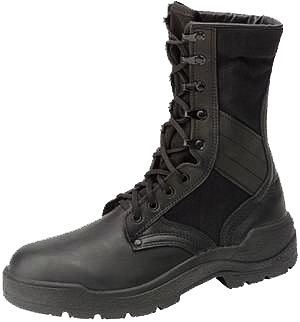
black ("LeBOCK AirZone støvle").
The DMS-type out-soles (Direct Moulded Soles) are anti-static, shock-absorbing and slip-resistant, being made by "LeBOCK SCS®" (Sole Compensator System) technology, i.e. the out-soles are of composite construction (polyurethane outer shell, the inner part is made of polyurethane foam).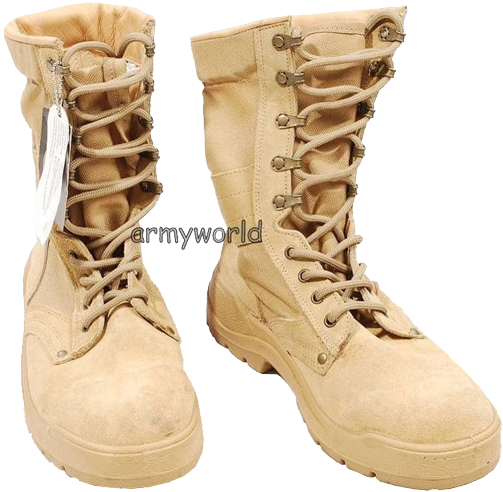

The soft polyurethane outer shell, with all its pros (good insulation, flexibility and light weight), has a significant drawback: if not properly stored, the out-soles of this material could crack and crumble, due to drying up and extinction of the material. These out-soles can also be easily pierced by sharp stones and broken glass, similarly to the plimsolls.
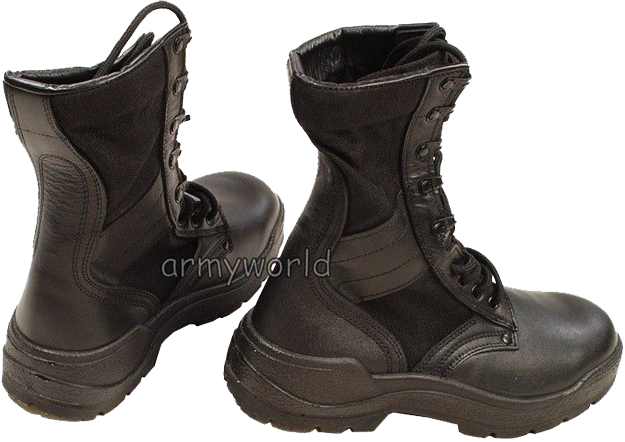
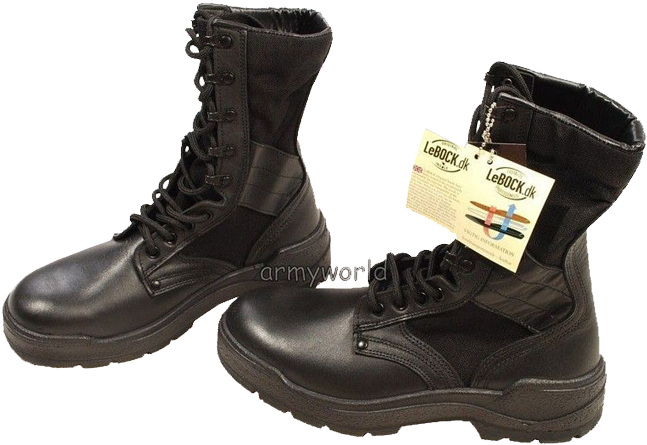
The tread pattern of the out-soles are of the Danish design, just the same as on the other models of boots of this manufacturer. The height of such boots (e.g. for the size 43) is 21 cm without the out-sole, and 25 cm with the out-sole. The Danish "desert" boots usually come with two pairs of insoles, that allows one to adjust the inner size of the boots. The manufacturer claims that these boots are suitable for winter, and it's just enough to remove the lower black felt insoles and put on an extra pair of thick woollen socks for comfortable wear in cold weather. Conditions
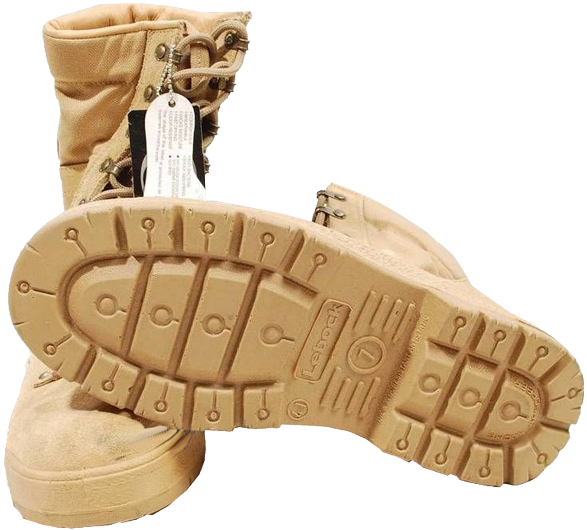
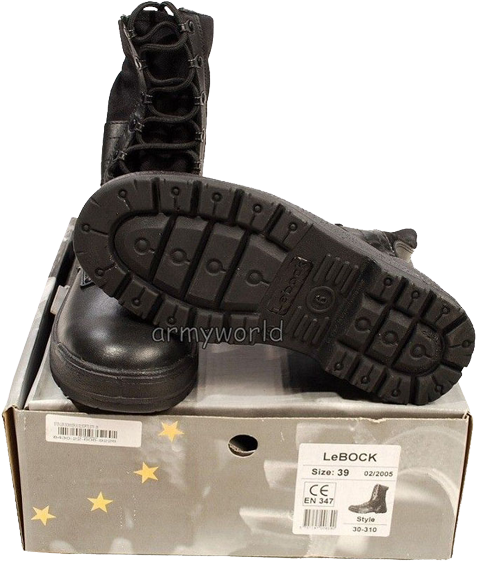
The marking of the boots (model name and serial numbers, manufacturer data etc.), as well as the information about compliance of these boots with the European safety standard for working and special footwear (CE EN 20347 01) is shown on the labels sewn inside the boots. The cost of such boots in Denmark is 715 DKK (about 96 Euros at the exchange rate as of December 2013).
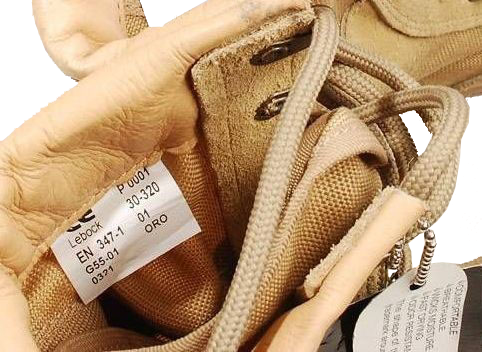
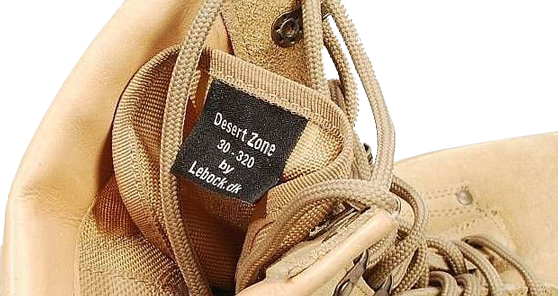
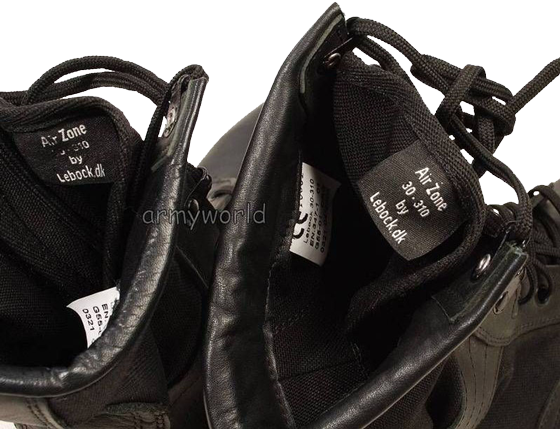
The lacing system consists of four pairs of round eyelets at the lower part of lacing and five pairs of "MARK" speed lacing eyelets in upper part. A soft cushioning "collar" with beige "glove"-type leather in the inner part is intended to prevent the ingress of sand and small pebbles inside the boots.
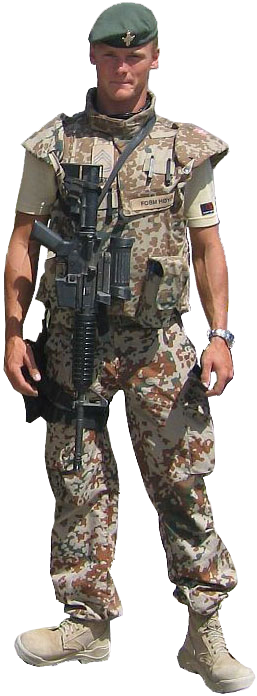
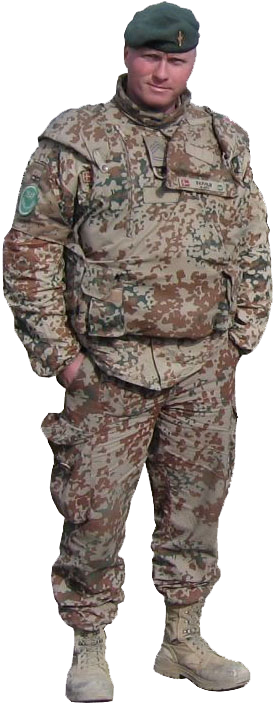
For 11 years (from January 2002 to July 1, 2013) these boots were supplied to the Danish combat troops, participating in NATO operations abroad, particularly in Afghanistan. From July 2013, Denmark began withdrawal its troops from Afghanistan. During the time of operation, about 9500 Danish soldiers passed through Afghanistan in constant rotation.
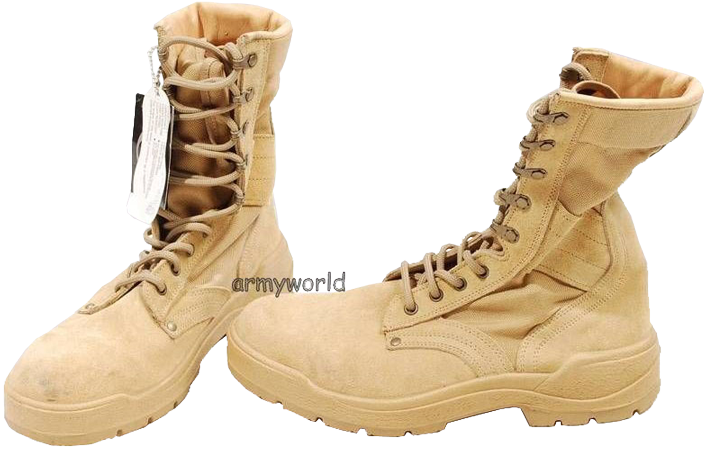
In 1999 the Danish Armed Forces implemented M/99 khaki-coloured "desert" boots with ox-suede foot and "Cordura" shaft, which are practically the copy of classical and well-known US Army "desert" boots.
Danish "Jungle" Boots Model M/94
The "jungle" boots of the Danish Armed forces are to great extent the analogous to the standard Danish M/58 military boots (model of the year 1958)which have been used for decades with minimal modifications.
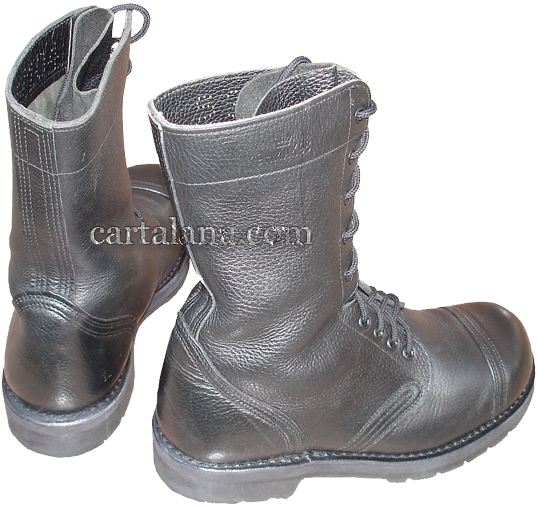
These boots are available in two versions - in green and black colours.
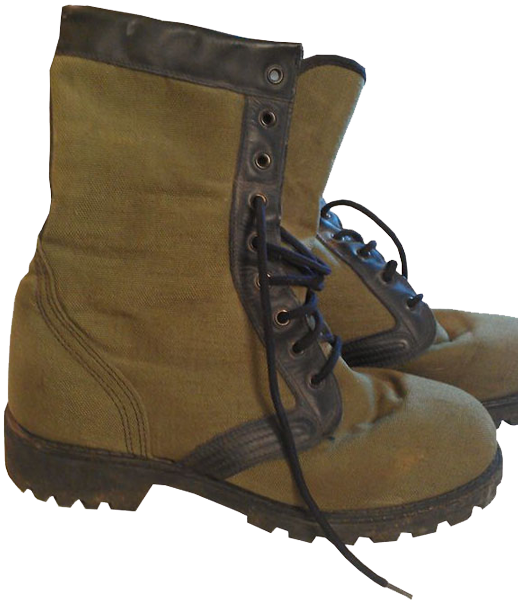
The out-sole of the black boots is the same as on the standard full-leather M/58 boots, the lacing system consists of ten pairs of simple round eyelets for black boots, and nine pairs for green boots
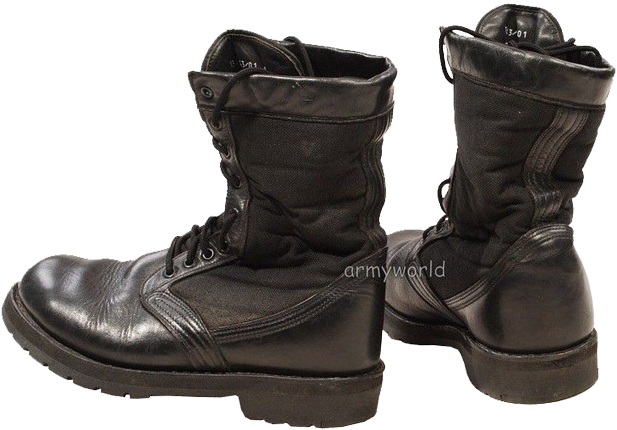
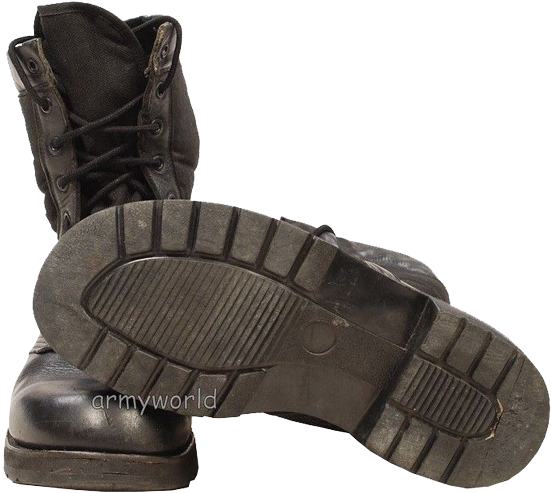
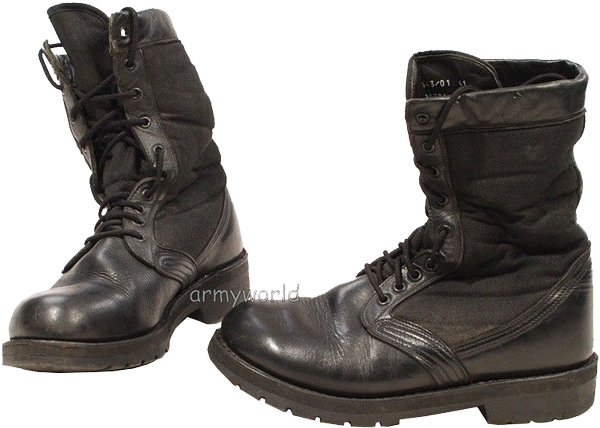
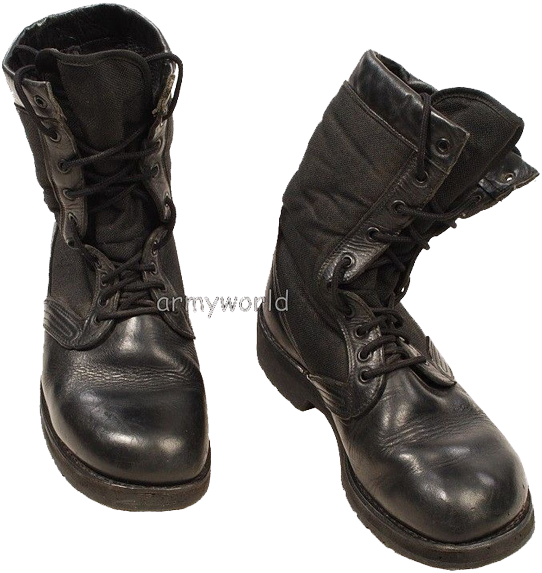
The black "jungle" boots of Denmark are made mostly of leather (namely, toe, counter, lacing system folds and an the upper cuff), while the green boots are almost entirely made of fabric material, with the exception of the leather stripes of the lacing system, on the "cuffs" of the boot's top and on the both sides of the boots.
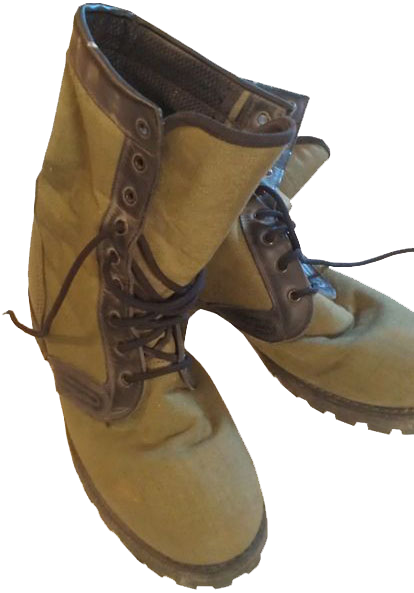
Inside the leather "cuffs" on the boot's top one can find the marking the Danish Armed Forces: the Royal Crown logo at the top, the year of production and the abbreviation (HMAK = Hærens MAterielKommando) - the Administration of material supplies management of the Danish Armed Forces. Sin such a way, 19HMAK94 means that these boots were manufactured in the year 1994 and were approved by HMAK.
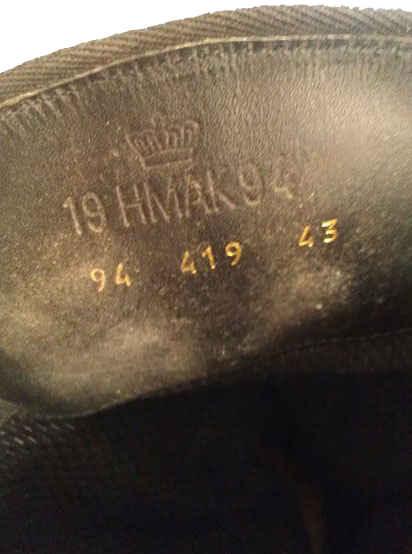
Danish YDS Gore-Tex® Boots by LeBOCK
The boots lined with a Gore-Tex® membrane (LeBOCK YDS Gore-Tex® støvle) are also widely used by the Armed Forces of Denmark. The peculiarity of these Danish military boots is in the complete absence of metal components. The top of these boots is made of hydrophobic cowhide and Cordura® nylon plus Gore-Tex® membrane fabric. The tread patterns of the out-soles are both classic Danish out-sole of the desert boots or a new out-sole.
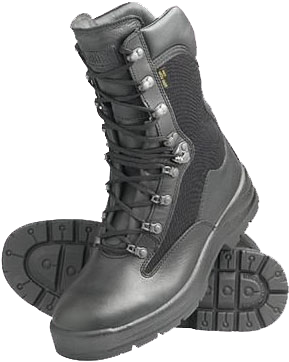
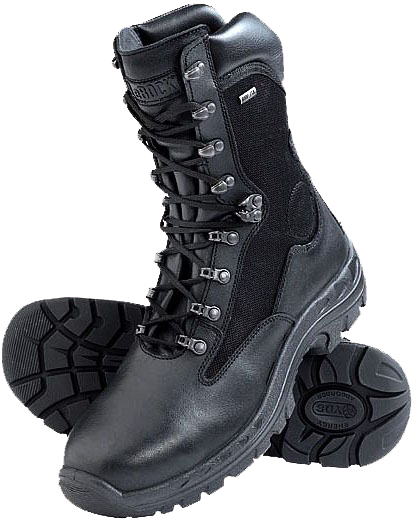
The durable out-soles of these boots are antistatic and oil-petrol-resistant YDS with polyurethane/thermo-polyurethane amortization. They are made by LeBOCK SCS® technology, allowing to "absorb" the energy of impact of the out-soles and the surface (when running and walking), and to relief the stress load on the feet joints.
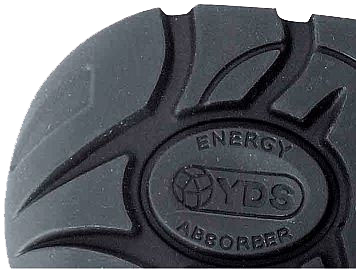
These boots feature the quick-lacing system and an original Danish lace-locking clamp that prevents the weakening of lacing.
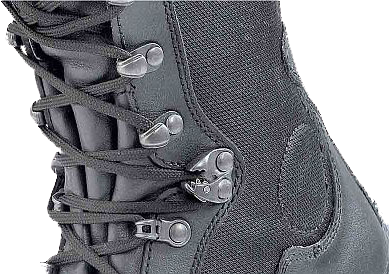
The price of these boots on the manufacturer's website is 1,425 DKK or 191 Euros.
Danish Army WinTherm Insulated Patrol Boots (LeBOCK Patruljestovle WinTherm)
For extreme weather conditions (heat and cold), the Danish Armed Forces use simple and comfortable "patrol" boots, manufactured by "LeBOCK" company. These boots are really created by quality work boots and made of hydrophobic leather, despite the fact that they are quite lightweight: a single boot weighs just 635 grams. The style of these boots is characterized by minimum number of seams, a powerful "collar" padding for insulation and cushioning at the top of the boots. These boots are lined with WinTherm® microfibre, a breathable material that provides insulation from heat, and from cold up to -20 C.
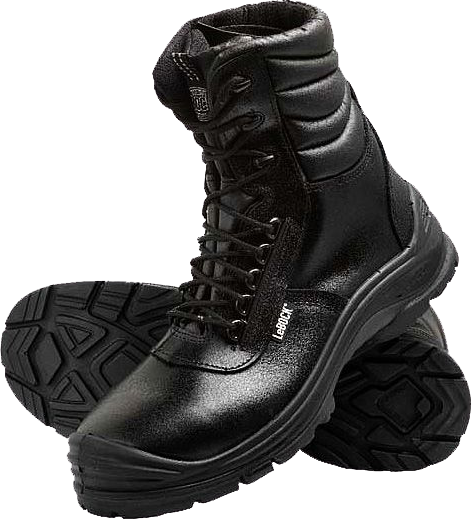
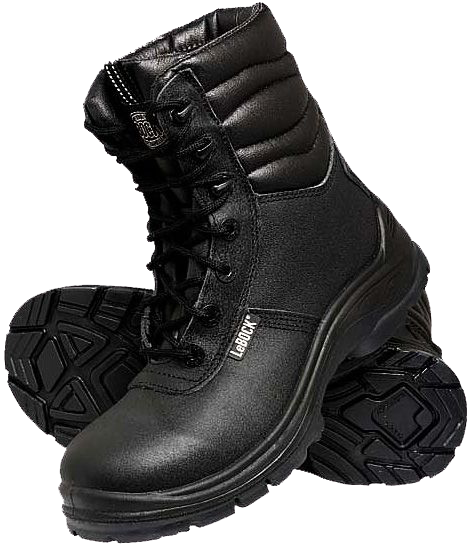
There are 2 types of lacing of these boots, as shown on the photos: four pairs of simple round eyelets + three pairs of speed lacing eyelets, or five pairs of D-shaped half-rings + three pairs of speed lacing eyelets. The flap of the boot's tongue is semi-closed, and the boot's tongue is stitched almost to the top of the boots. The padded DMS (Direct Mould Sole)-type out-soles are composite in construction, and made of polyurethane and thermo-polyurethane. The out-soles are antistatic, slip resistant and oil-petrol-resistant. On the toe and on the heels the out-soles "come up" for better protection of the feet.
The cost of these boots on the manufacturer's website is 940 Danish Kroner (about 126 Euros).
Danish Military Boots (Militærstøvler): "Special Forcee" and "JOLLY® Explorer GORE-TEX®"

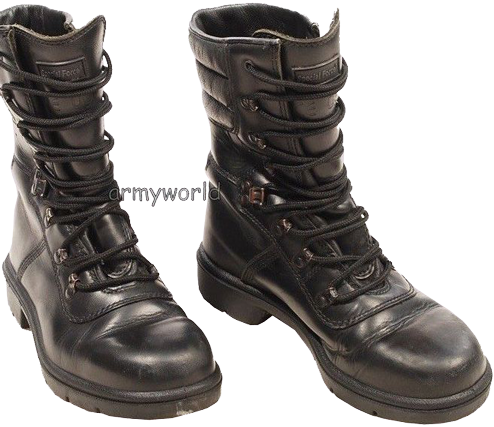
In the last decade the Armed Forces of Denmark are gradually shifting from "classic" M/58 military boots (traditional army boots model that dates back to the mid-1950-s) to the new kinds of military footwear. The most massively used boots of the Danish army are currently "Special Force"- labelled.

The German Bundeswehr boots of Models "2000" and "2005/2007", having the new recognizable NATO-type tread pattern are well-known in the world. The out-sole tread patterns of the new Danish army boots is almost identical to the boots out-soles of other NATO armies, from Romania to Belgium, which apply the same out-sole design.
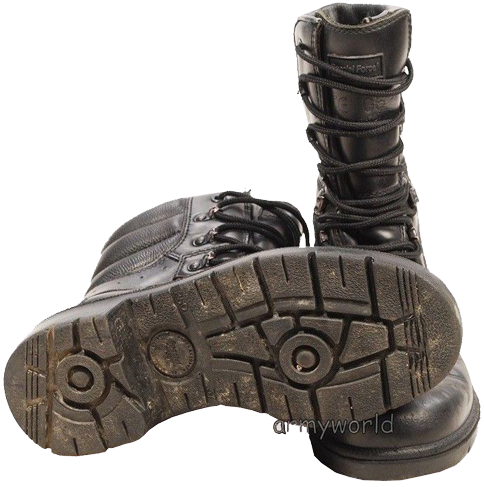
The Danes did not experiment with multilayer arrangement of their out-soles, and preferred the monolithic out-soles, so they did not face with any problems the out-soles de-lamination, typical for Bundeswehr boots Modell 2000 model (this defect was eliminated only in the new improved models 2005/2007).

This model of the Danish boot is very similar to Bundeswehr boots, it has similar design, focused on the minimum number of seams, and therefore more waterproof. The damper element on the upper back side of the boots provides flexibility of foot bending. This is needed, because, in general, these boots are quite sturdy and they provide good fixation of the feet. The boot's tongue is stitched almost to the top of the boots - i.e. The flap of the boot's tongue is semi-closed. The tongue shows the marking of the manufacturer, the serial number, the year of manufacture and compliance with European footwear safety standards.
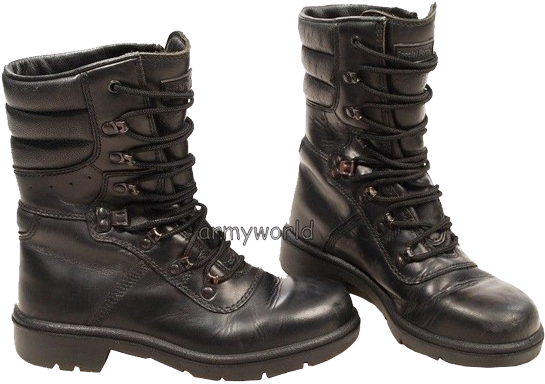
The boot's speed lacing system is made of bronze and consists of three pairs of eyelets at the lower part, a pair of lacing hook-clamps above, and three pairs of speed-lacing eyelets at the top. There is also a couple of simple round eyelets on the very top of the boots - this typically Danish element of design is intended for ease of tying the laces.
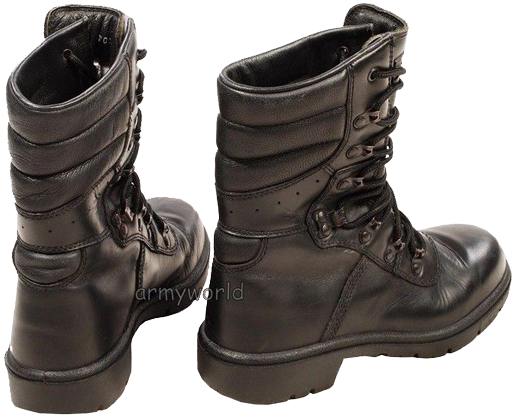
Unlike the similar Bundeswehr models, the Danish boots feature microfibre textile as the insulation, not "glove"-type leather. Also the Danish boots feature more wide pleated "collar" padding on the top of the boots, with soft black leather inside it. Under the "collar" padding there is perforated ventilation to remove excessive heat and moisture from inside the boots.
Danish Army Boots Model M03 (JOLLY® Explorer)
Danish model M03 army boots JOLLY® Explorer with GORE-TEX® membrane (JOLLY® Explorer GORE-TEX® M03 Militærstøvler) are manufactured by "LeBOCK" company, the contract supplier of the Danish Armed Forces.

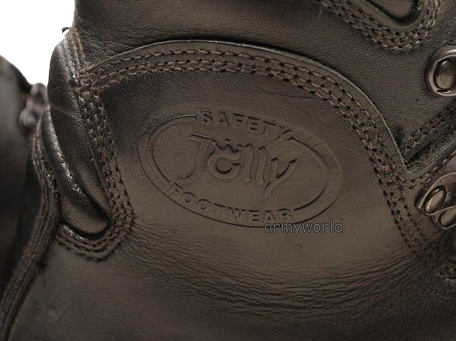
These boots model of the year 2003 (M03) are made of black thick hydrophobic cowhide and features GORE-TEX® membrane fabric lining.
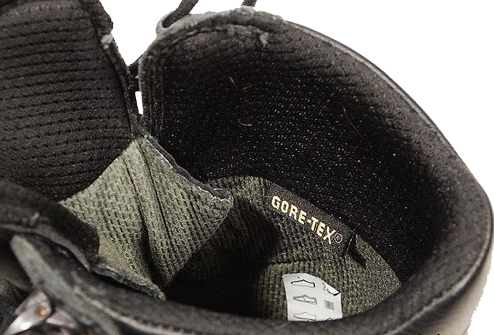
These boots can rightfully be called safe boots, not only because they meet the requirements of EN ISO 20347 European safety standard for specialized boots, but also because the out-soles of JOLLY® Explorer M03 boots are protected from punctures by three-layer Kevlar (thin but durable multi-layer polymeric material) inner sole, which is installed on top of a two-component nitrile rubber protector (oil and petrol-resistant, antistatic and resistant to the temperatures up to +300 C).
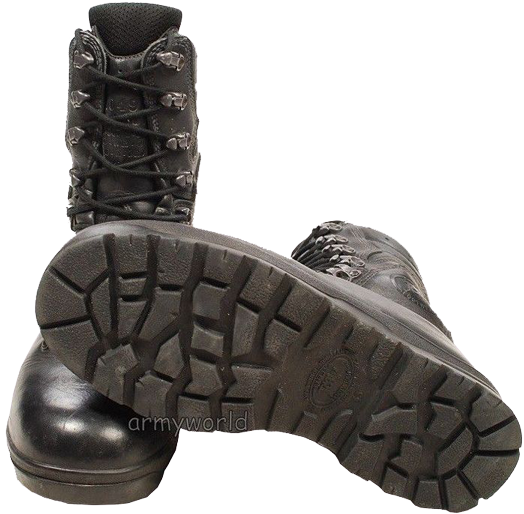
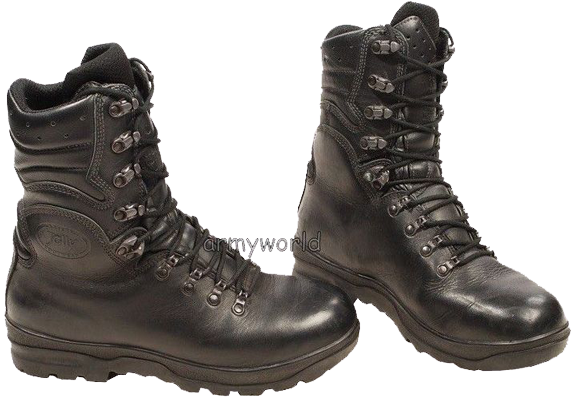
The laces of these boots are made of Nomex®, a fireproof material, which is typically used for tank and aviation coveralls. The height of the boot is 27 cm for size 42, the weight of a single boot is 1080 grams.
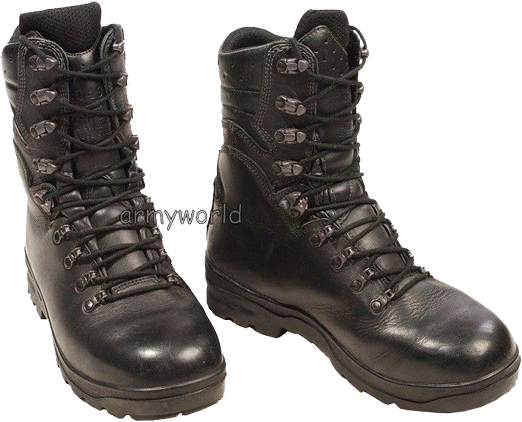
The specific characteristics of these boot caused quite high price of 2,180 Danish Kroner, or just over 282 Euros.
The sources of the photos and information:
http://armyworld.pl
http://lebock.dk
Exclusively for cartalana.com
We have much more interesting information on this site.
Click MENU to check it out!
∎ cartalana.com© 2009-2025 ∎ mailto: cartalana@cartalana.com